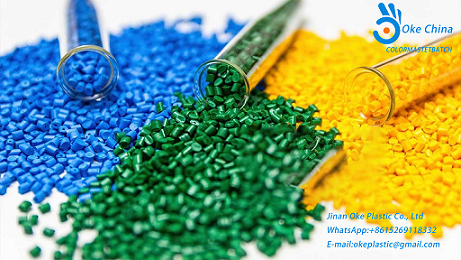Smoothness Masterbatch (Opening Agent Masterbatch)
1. Basic Concept
Anti-blocking/Smoothness/Opening Agent masterbatch is a functional plastic additive primarily used to improve the opening performance of plastic films (e.g., PE, PP, BOPP), preventing film layers from sticking together during winding, stacking, or storage. Its core functions are to reduce the coefficient of friction (COF) on the film surface and create micro-roughness to minimize direct contact between layers.
2. Core Functions
Anti-blocking: Prevents film layers from adhering due to static or pressure.
Slip enhancement: Lowers surface friction for high-speed packaging or cutting.
Surface protection: Reduces scratches and maintains film clarity/printability.
3. Key Components
Component | Mechanism | Common Materials |
Forms micro-protrusions on the film surface to reduce contact area. | Silica (SiO₂), diatomite, ceramic microspheres | |
Migrates to the surface to form a lubricating layer. | Oleamide, erucamide (food-grade), EBS (ethylene bis-stearamide) | |
Carrier resin | Ensures compatibility with the base polymer. | LDPE, LLDPE, PP (selected based on film material) |
Additives | Improves dispersion, thermal stability, etc. | Antioxidants, dispersants (e.g., polyethylene wax) |
4. Applications
Packaging films: Food bags, courier bags, stretch films (target COF: 0.2–0.4).
Agricultural films: Mulch films, greenhouse films (requires weather-resistant grades).
Industrial films: Protective films, release films (high anti-blocking demand).
Medical films: IV bags, pharmaceutical packaging (requires FDA-compliant slip agents).
5. Performance Metrics & Testing
Coefficient of Friction (COF)
Static (μs) and dynamic (μd) COF; typically μd < 0.3 (e.g., supermarket bags require μd ~0.15).
Anti-blocking Test
ASTM D3354: Measures peel force (unit: g/cm²) to separate film layers.
Thermal Stability
Withstands processing temperatures (180–250°C) without decomposition or yellowing.
6. Selection Guidelines
Requirement | Recommended Solution |
High-clarity films | Nano-sized SiO₂ (particle size ≤5μm) to avoid haze. |
Food contact | Use erucamide (FDA-compliant) instead of standard oleamide. |
High-temperature processing | Heat-resistant slip agents (e.g., EBS) + antioxidants. |
Long-term storage | Controlled migration (e.g., SiO₂/amide hybrid systems). |
7. Troubleshooting
Issue 1: Poor film opening
Cause: Insufficient anti-blocking agent or poor dispersion.
Solution: Increase masterbatch dosage (typically 1–5%) or switch to high-concentration grades.
Issue 2: "White powder" on film surface
Cause: Silica precipitation or excessive slip agent migration.
Solution: Optimize extrusion (increase dispersion temperature) or use slow-release slip agents.
Issue 3: Reduced print adhesion
Cause: Excess surface slip agent acts as a barrier.
Solution: Lower masterbatch content or switch to internally added anti-blockers (e.g., organomodified silicones).
8. Comparison with Alternatives
Type | Liquid Slip Agents | |
Ease of use | Direct blending; no extra equipment | Requires spraying/dipping; complex process |
Longevity | Slow migration; long-lasting | Prone to evaporation/wear |
Cost | Medium-high (includes carrier resin cost) | Low (but requires frequent reapplication) |



